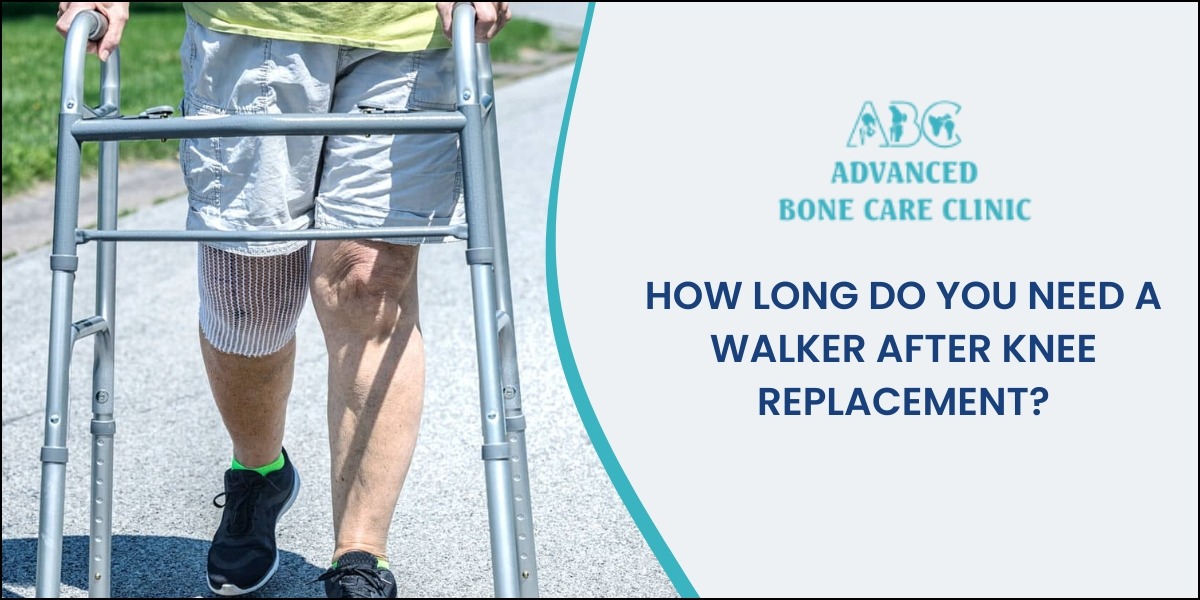Undergoing knee replacement surgery in Pune is a significant step towards reclaiming a pain-free, active life. A common and crucial question patients have is about the immediate post-operative phase: “How long will I be dependent on a walker?” Understanding this timeline is key to setting realistic expectations and ensuring a successful recovery.
This guide, with insights from the best knee replacement surgeons, will walk you through the typical progression of mobility aids after your surgery.
The Initial Phase: Essential Support (First 1-2 Weeks)
Immediately after your total knee replacement, a walker is non-negotiable. For the first week or two, it is your best friend. Your new knee needs time to heal, and the surrounding muscles are weak. The walker provides maximum stability, prevents falls, and helps you follow the crucial “toe-touch” or partial weight-bearing guidelines given by your surgeon. It allows you to get out of bed safely and start moving, which is vital for preventing blood clots and promoting circulation.
The Transitional Phase: Gaining Confidence (Weeks 2-4)
As your strength improves and pain/swelling decrease, you will gradually put more weight on your operated leg. This is when many patients, under the guidance of their physiotherapist, transition from a walker to a crutch or a cane. You might start by using a single crutch or a quad cane on the opposite side of your surgery. This phase is about building confidence and balance while still having significant support.
Graduating to Independence (Around 4-6 Weeks)
The most common answer to the central question is that most patients use a walker for about 2 to 4 weeks. By the fourth to sixth week, many individuals have progressed to walking with a cane or sometimes without any aid at all for short distances indoors.
However, it is crucial to remember that this is a general guideline. The exact timeline varies for everyone and depends on several factors:
- Your Pre-Surgery Strength: Patients with stronger leg muscles before surgery often recover faster.
- Adherence to Physiotherapy: Diligently following your exercise regimen is the single biggest factor in a speedy recovery.
- Your Overall Health: Age and other medical conditions can influence healing speed.
- Type of Surgery: Every procedure and patient is unique.
Always follow the specific advice of your orthopedic surgeon and physiotherapist in Pune. They will assess your progress and guide you on when it’s safe to move to the next stage.
A successful knee replacement journey in Pune relies on patience and following expert guidance. If you are considering surgery and have more questions about the recovery process, consulting with an experienced specialist is the best step.
For expert care and a personalized recovery plan, consider consulting with Dr. Murtaza Adeeb, a renowned Knee Replacement Surgeon in Pune, Maharashtra. With a focus on advanced surgical techniques and comprehensive post-operative support, he helps patients navigate their path to walking independently once again.
Frequently Asked Questions (FAQs)
1. Can I skip the walker and use a cane right away?
No, this is not safe. A walker provides essential stability in the early days when your leg is weak and your balance is compromised, significantly reducing the risk of falls.
2. What comes after a walker?
Typically, patients progress to a crutch or a cane (held in the hand opposite to the surgery) before walking completely unaided.
3. How long is physical therapy after knee replacement?
Formal physical therapy often lasts for 6-8 weeks, but you should continue with prescribed exercises for several months to regain full strength and range of motion.
4. What is the fastest way to recover from a knee replacement?
The fastest recovery involves closely following your surgeon’s and physiotherapist’s instructions, managing pain and swelling effectively, and being consistent with your home exercise program.
5. When can I drive after knee replacement?
Most patients can resume driving after 4-6 weeks, but you must be off strong pain medication and able to confidently and quickly perform an emergency stop. Always get clearance from your surgeon first.







